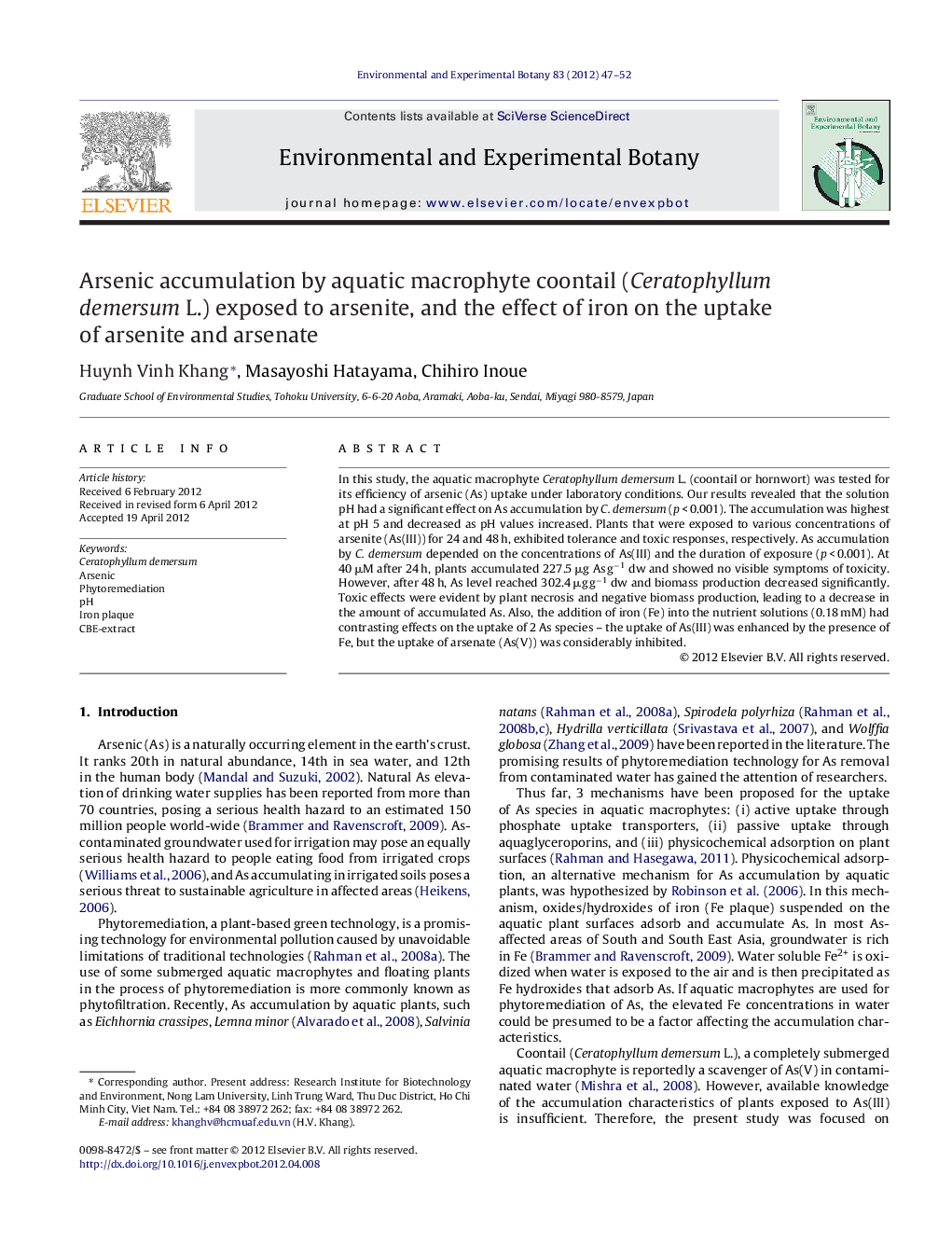| Article ID | Journal | Published Year | Pages | File Type |
|---|---|---|---|---|
| 4554615 | Environmental and Experimental Botany | 2012 | 6 Pages |
In this study, the aquatic macrophyte Ceratophyllum demersum L. (coontail or hornwort) was tested for its efficiency of arsenic (As) uptake under laboratory conditions. Our results revealed that the solution pH had a significant effect on As accumulation by C. demersum (p < 0.001). The accumulation was highest at pH 5 and decreased as pH values increased. Plants that were exposed to various concentrations of arsenite (As(III)) for 24 and 48 h, exhibited tolerance and toxic responses, respectively. As accumulation by C. demersum depended on the concentrations of As(III) and the duration of exposure (p < 0.001). At 40 μM after 24 h, plants accumulated 227.5 μg As g−1 dw and showed no visible symptoms of toxicity. However, after 48 h, As level reached 302.4 μg g−1 dw and biomass production decreased significantly. Toxic effects were evident by plant necrosis and negative biomass production, leading to a decrease in the amount of accumulated As. Also, the addition of iron (Fe) into the nutrient solutions (0.18 mM) had contrasting effects on the uptake of 2 As species – the uptake of As(III) was enhanced by the presence of Fe, but the uptake of arsenate (As(V)) was considerably inhibited.
► Arsenic accumulation by Ceratophyllum demersum was pH-dependent. ► C. demersum accumulated high concentrations of arsenic after exposed to As(III)-containing solutions. ► The addition of iron enhanced arsenic adsorption on plant surfaces of C. demersum exposed to both As(III) and As(V), but had contrasting effects on the uptake of two arsenic species.
